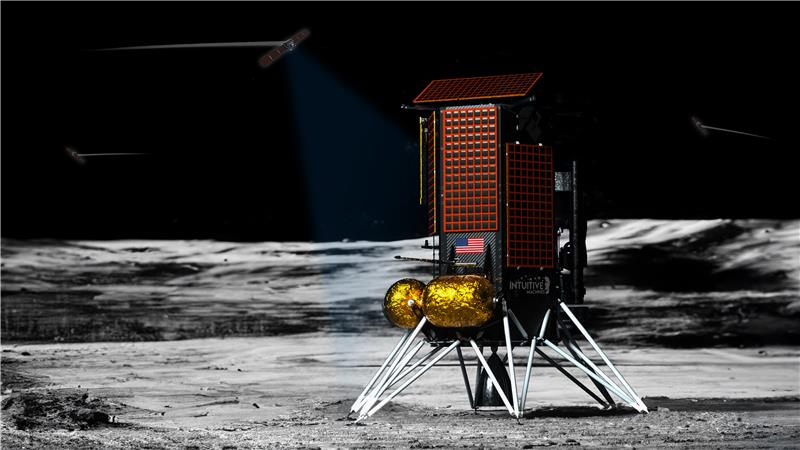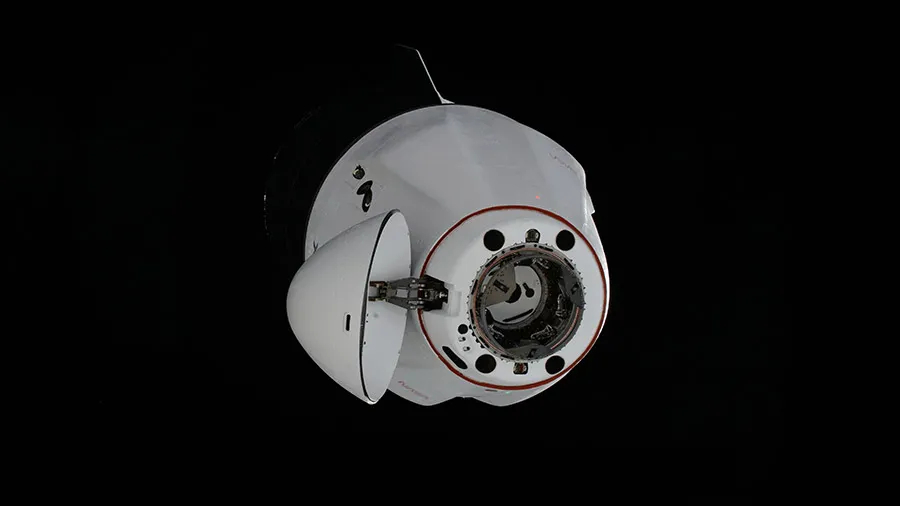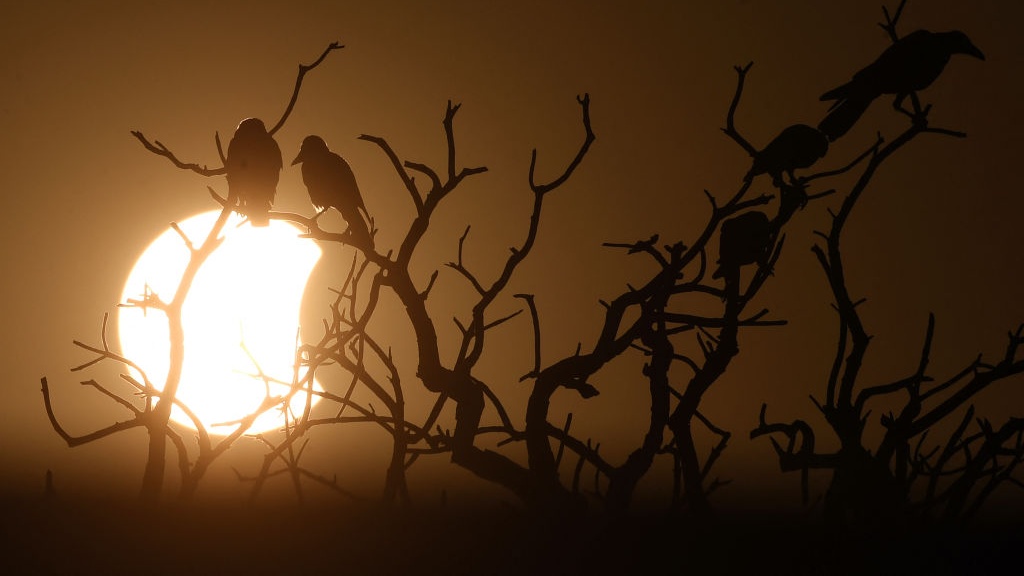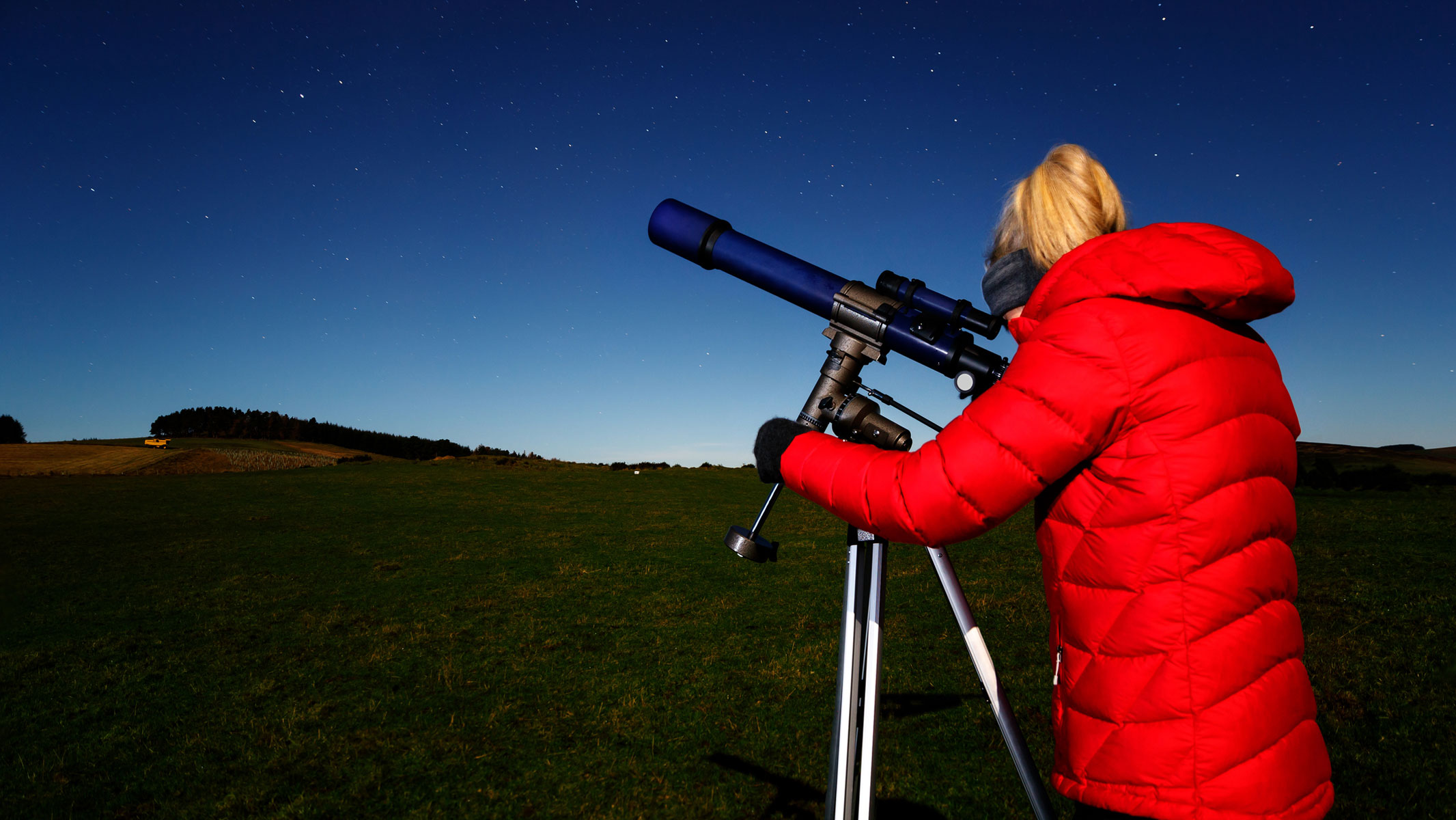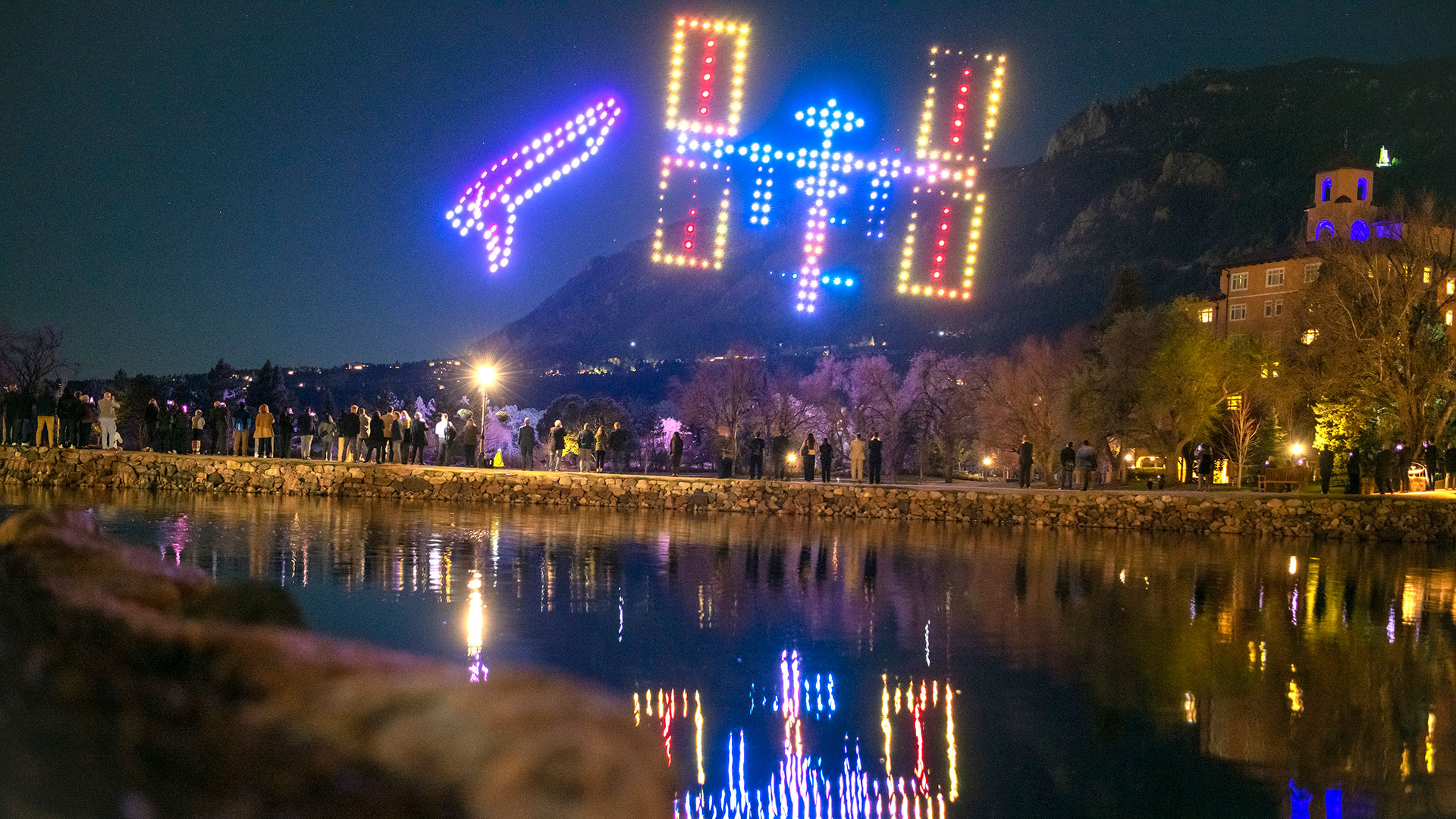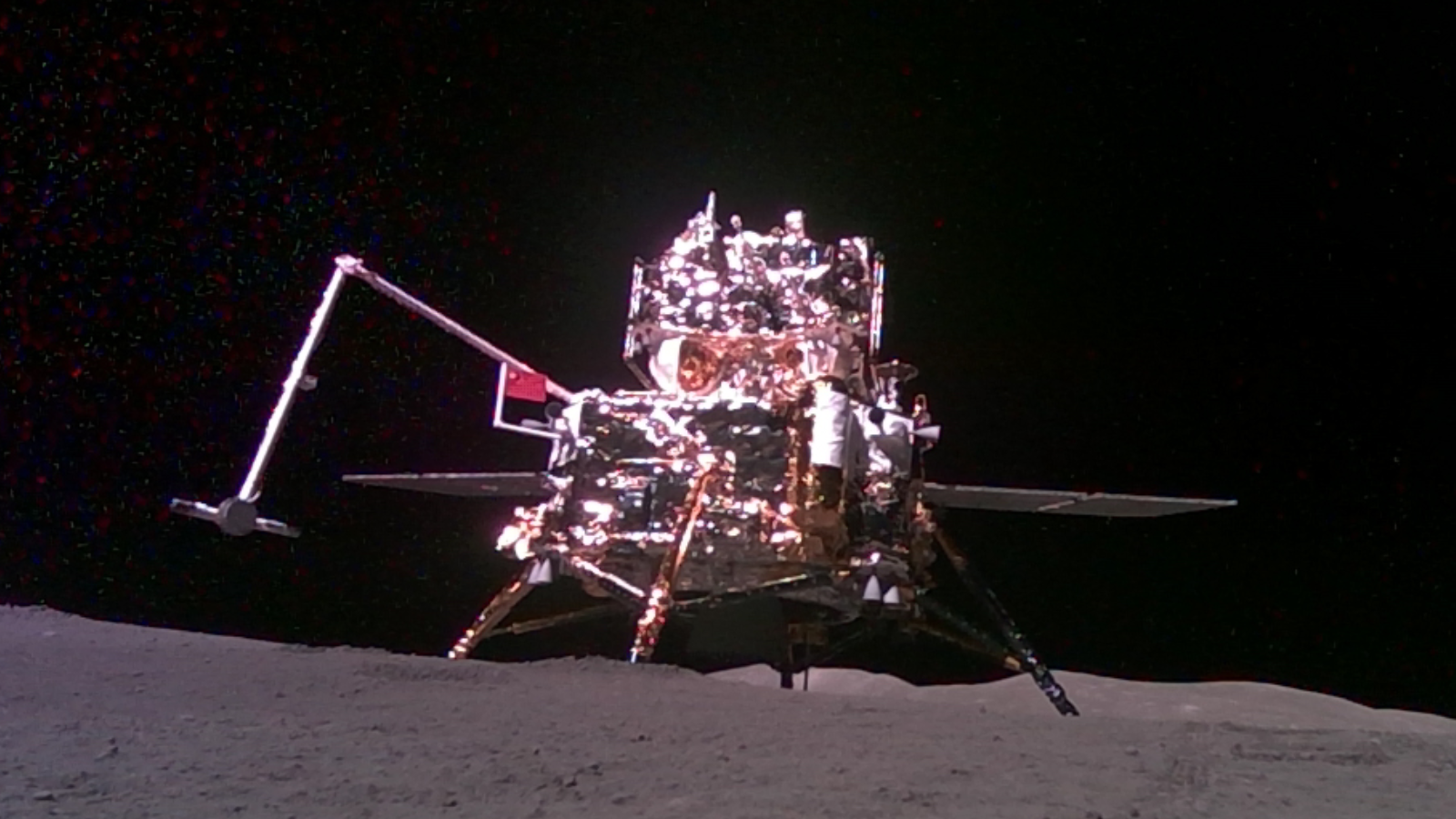Euclid 'dark universe' telescope captures 1st full-color views of the cosmos (images)
"These exquisite Euclid images show that the mission is ready to help answer one of the greatest mysteries of modern physics."
On Tuesday (Nov. 7), astronomers hailed the Euclid telescope's ability to capture stunning intricacies of the universe in remarkably few hours as they revealed the mission's first portfolio of full-color images.
"We have never seen astronomical images like this before, containing so much detail," René Laureijs, Euclid project scientist, said in a statement prior to the unveiling. "They are even more beautiful and sharp than we could have hoped for, showing us many previously unseen features in well-known areas of the nearby universe."
Mission scientists gathered in Darmstadt, Germany to reveal and discuss the telescope's first five vibrant images of various pockets in the universe. Euclid's first test images were released at the end of July, but important as they were, these visuals barely scratched level 1 of this telescope's abilities.
Rich in color as well as in nuance, the new snapshots capture previously unseen features in even some deeply studied cosmic objects, assuring astronomers that the telescope is, in fact, ready to get going on its ambitious task: Mapping the dark, invisible side of our universe.
The hope is to uncover the mysteries of dark matter and dark energy by studying billions of galaxies that reside up to 10 billion light-years away from Earth. And sure enough, much to the excitement of the team's scientists, a few of these faraway objects already appear in Euclid's first batch of images.
Related: James Webb Space Telescope will help Euclid spacecraft investigate dark energy and dark matter
In one go, the telescope can look at large swaths of sky — areas almost 100 times bigger than what the James Webb Space Telescope can observe, scientists shared on Tuesday. Each of Euclid's high-resolution images also includes over 600 million pixels, which is how they allow astronomers to clearly see far into the distant universe. All in all, Euclid took a total of one single day to capture all five cosmic objects we see, chosen for public appeal as well as scientific value.
Get the Space.com Newsletter
Breaking space news, the latest updates on rocket launches, skywatching events and more!
"I'm absolutely delighted to say that is the point where we say that we have reached all of our engineering milestones for the mission and we're now able to move into the science phase," Carole Mundell, ESA's director of science, said while revealing the images. "It's a really special day today."
Without further ado, let us begin our sightseeing tour through the eyes of Euclid.
The 'Hidden Galaxy' comes into view
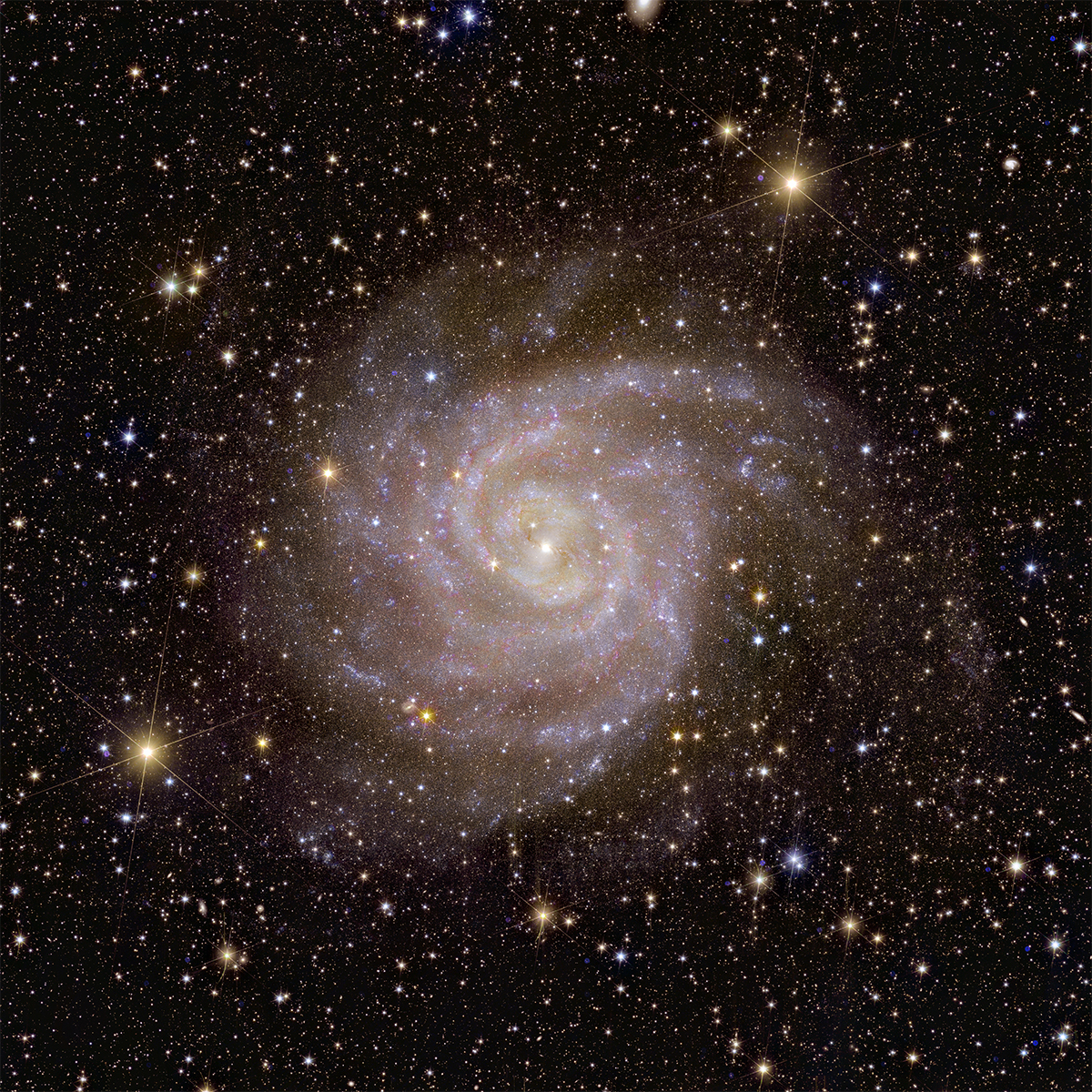
One of the first galaxies Euclid observed is nicknamed the "Hidden Galaxy," and resides about 11 million light-years away from Earth. It is aptly named, as it sits behind the disk of our home galaxy, the Milky Way. The Hidden Galaxy is thus usually obscured by cosmic gas, dark dust and bright stars, but Euclid managed to use its near-infrared instrument to peer past that blanket and collect light from the galaxy's stars — in just an hour of observing time.
"This image might look normal, as if every telescope can make such an image, but that is not true," Leslie Hunt of the National Institute for Astrophysics in Italy said in the statement. "What's so special here is that we have a wide view covering the entire galaxy, but we can also zoom in to distinguish single stars and star clusters."
The "Hidden Galaxy," or IC 342 as astronomers call it, is a spiral galaxy like the Milky Way. Because it is tough to study our own galaxy as we can only see it edge-on (we live inside it, after all), scientists have to rely on dissecting other galaxies that offer us a better galactic view. Studying IC 342 can therefore teach us a lot about the Milky Way — specifically, the new details revealed by Euclid can help trace star formation history and evolution, Hunt added.
"If you need to observe a billion galaxies, you have to start with one," Laureijs said while revealing this image of the Hidden Galaxy. "And this is the one."
Old and new galaxies glimmer in the Perseus Cluster

This familiar picture shows over 1,000 galaxies glowing in the Perseus constellation, which sits about 240 million light-years away from Earth. Hosting thousands of galaxies enveloped in superheated gas, this galaxy cluster is thought to be one of the most massive structures in the universe.
The large galactic members of this cluster can be spotted by their yellowish-white haloes, akin to street lamps in a foggy night. Thousands of stars are noticeably spiked, an optical artifact as a result of how light diffracts and bends around edges of Euclid's mirrors. In comparison, images clicked by the Hubble Telescope have four such spikes, formed due to its square mirrors while those by James Webb Space Telescope feature six large spikes, thanks to its hexagonal mirrors.
Further away, the activities of 100,000 other galaxies are seen as countless white, yellow and red specks of light. Few are, in fact, so distant that their light has traveled 10 billion years to reach Euclid's detectors. Astronomers are particularly interested in scouting out more of these very tiny, very faint galaxies. Basically, cosmological simulations that scientists create seem to predict the universe must contain a lot more of these small entities than what we've found so far.
"With Euclid, we will be able to see them, if they indeed exist in such a large number as predicted," said Jean-Charles Cuillandre of the French Alternative Energies and Atomic Energy Commission in Paris.
A spray of pink stars in NGC 6822
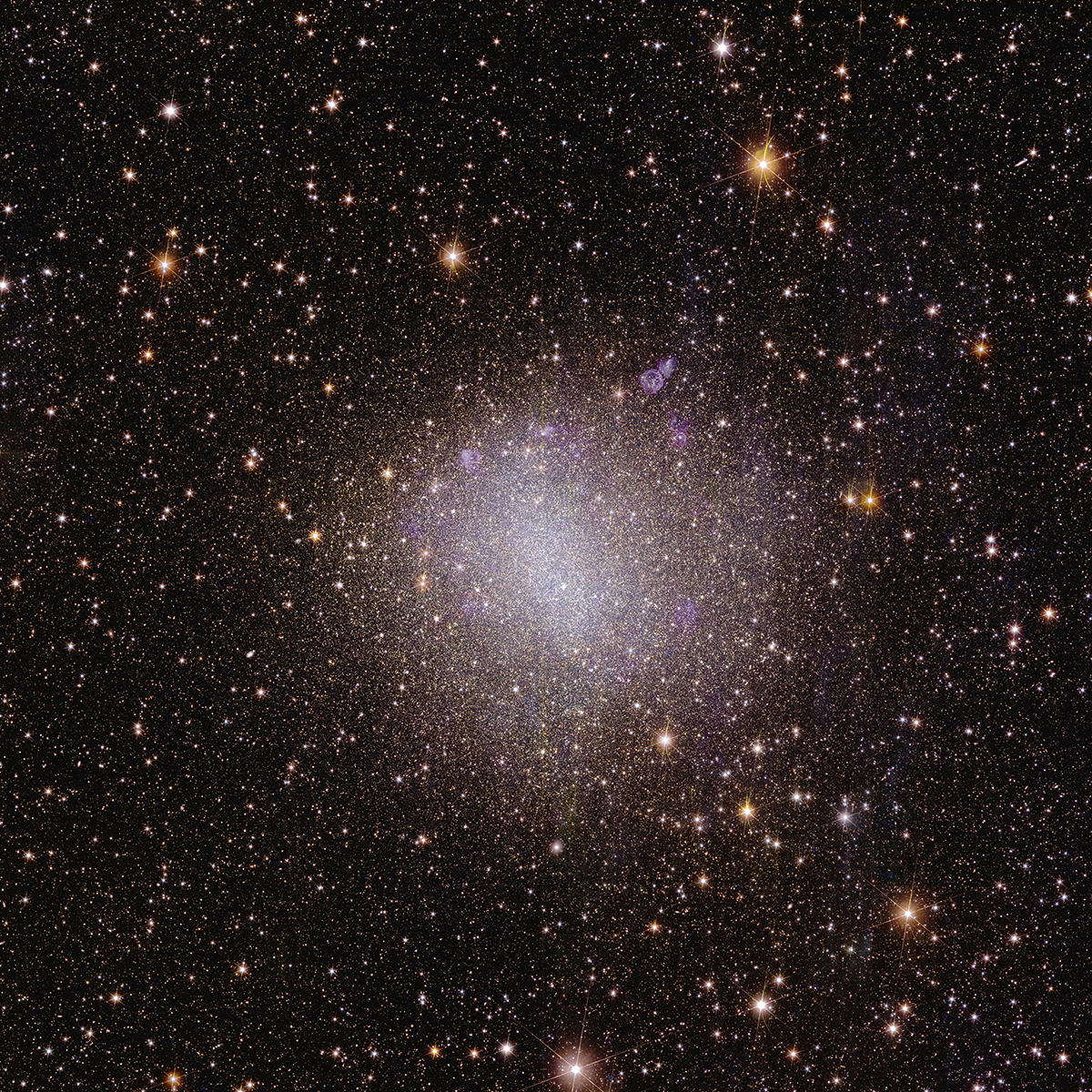
At just 1.6 million light-years from Earth, NGC 6822 looks less like a galaxy and more like a spray of fine mist. Its pink stars seem to float in the dark expanse of space. Scientists say that's because this galaxy is likely the seed for a future, more structured galaxy like our own.
NGC 6822 marks the first irregular galaxy that Euclid observed. Although it is part of the same galaxy cluster as the Milky Way, NGC 6822 surprisingly contains heavy metal elements not otherwise common in young, still-forming galaxies.
Another splatter of stars glitter in NGC 6397
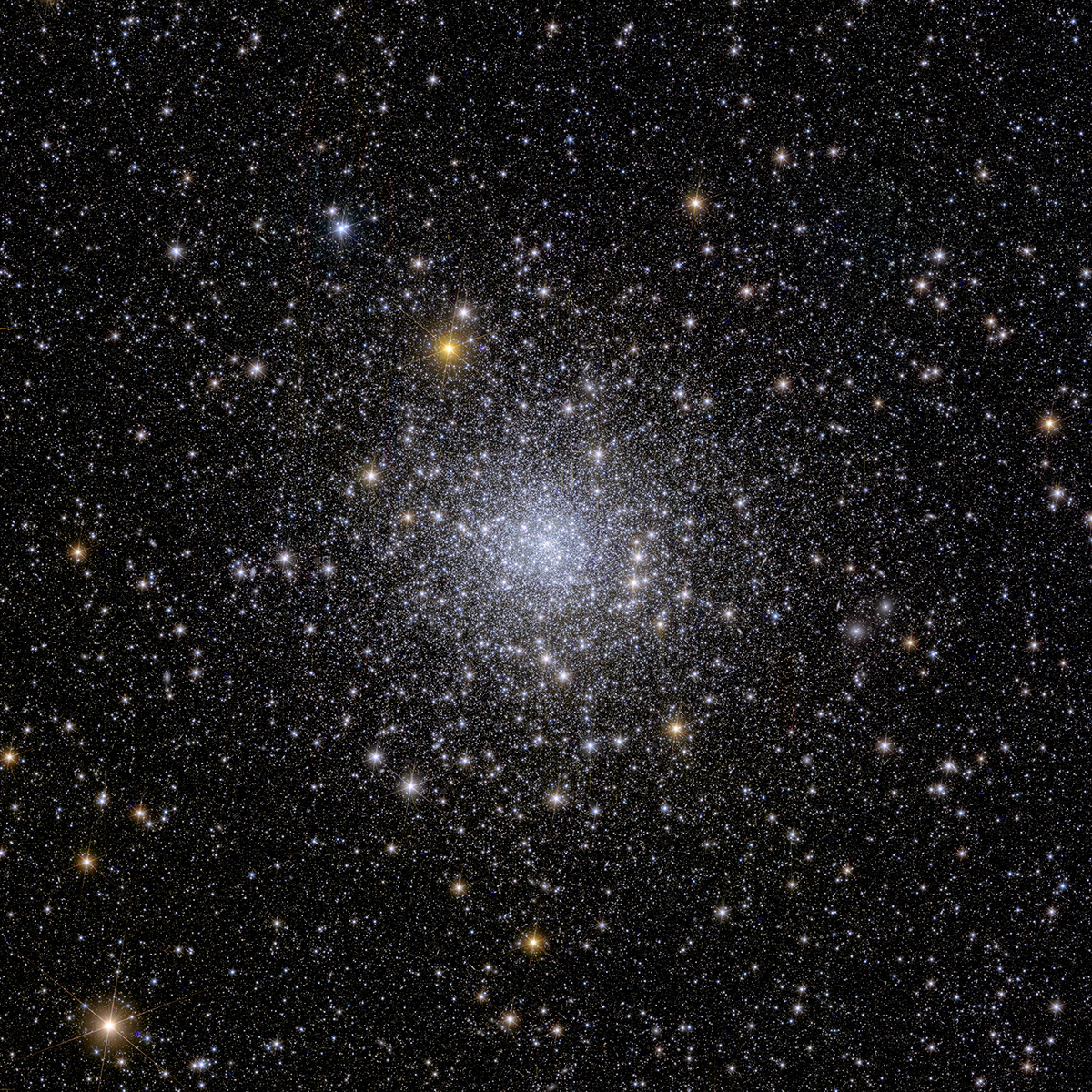
Among Euclid's seminal muses, there is also this shimmering image featuring NGC 6397 globular cluster, a collection of thousands of stars that are bound by gravity and orbit in the disk of the Milky Way about 7,800 light-years from Earth.
Astronomers are particularly interested in those faint stars lying in the outskirts of the cluster, barely illuminated in the crowded background, which are otherwise drowned by the shine of their brighter counterparts. So, with Euclid, scientists say they combined short exposure shots of foreground objects with long exposures of thousands of distant stars to capture both nearby and faraway objects in high resolution.
"It is actually the kind of image we were hoping to achieve," said Giuseppe Racca, Euclid project manager at ESA. "We're really very satisfied and proud."
Using Euclid, astronomers will search this cluster for something called a tidal tail, which is a trail of stars extending outward from the object due to gravitational interactions with other galaxies outside of the cluster. If they find such tails in NGC 6397, they can calculate things such as how the cluster orbits our galaxy, which could then reveal the distribution and behavior of dark matter halo in the Milky Way.
"We expect all of the globular clusters in the Milky Way to have them, but so far we have only seen them around just a few," Davide Massari of the National Institute for Astrophysics in Italy said in the statement. "If there are no tidal tails, then there could be a dark matter halo around the globular cluster, preventing the outer stars from escaping."
The iconic Horsehead Nebula shines in new detail
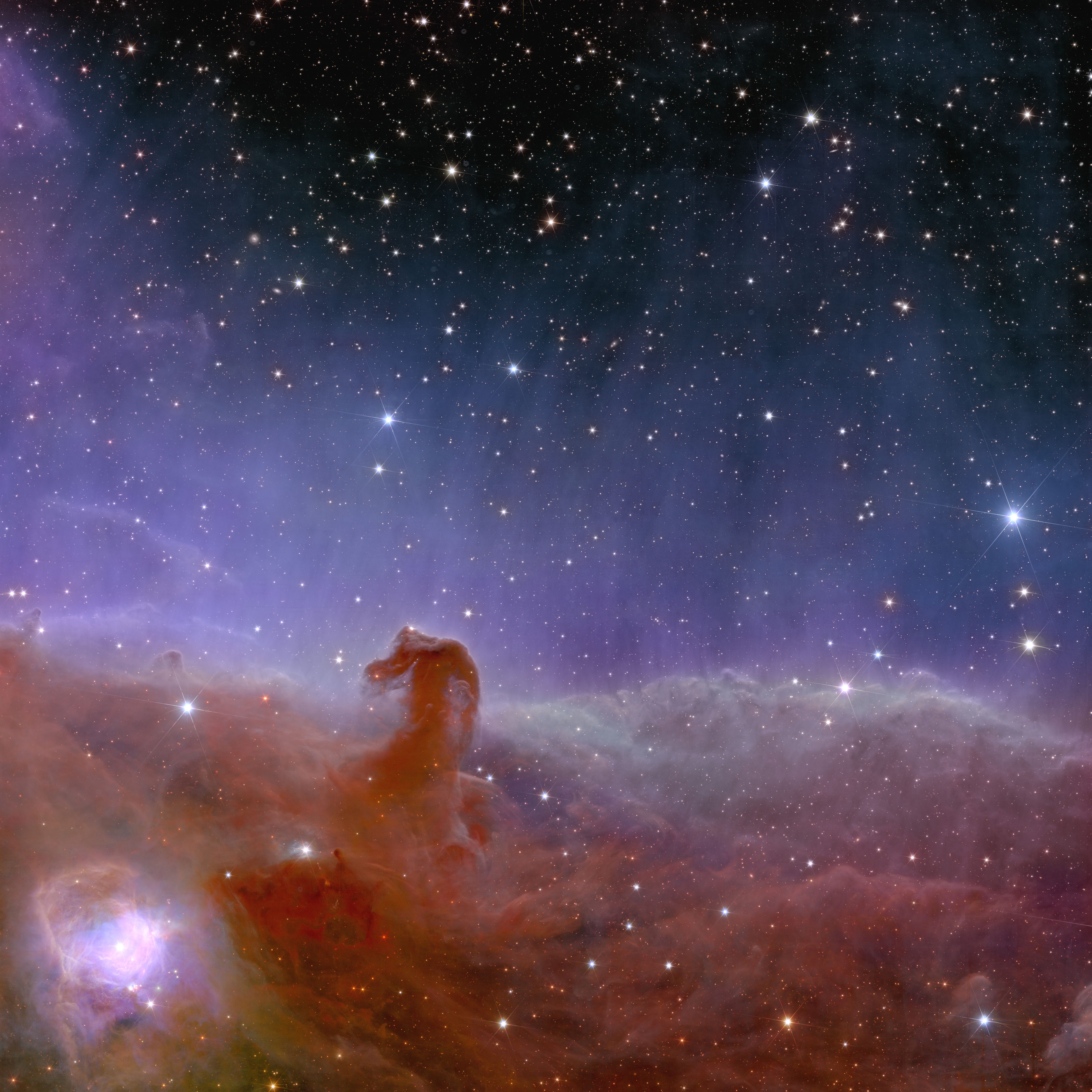
The final image in Euclid's new portfolio is an unbridled look of the famous Horsehead Nebula, a large, dark molecular cloud about 1,500 light-years from Earth in the constellation Orion.
A very bright star, Sigma Orionis, placed above the Horsehead and outside Euclid's field of view is seen pumping ultraviolet radiation into the stellar nursery, causing the background clouds to glow. The Horsehead's head itself looks dark because its thick hydrogen clouds block background light, astronomers say.
The clouds around the nebula have already dissipated, while the Horsehead's pillar will fall apart in another 5 million years, astronomers say. Using Euclid's capabilities, scientists are hoping to spot lots of dim, young and previously unseen Jupiter-like planets and baby stars in the region.
Scientists say they expect to publish the first scientific results from the mission early next year. "There is really a frenzy in getting this first data out," said Laureijs.
Meanwhile, from its vantage point a million miles (1.6 million km) from Earth, Euclid will soon begin its six-year data collection of the cosmos. Ad astra to you, Euclid!
Join our Space Forums to keep talking space on the latest missions, night sky and more! And if you have a news tip, correction or comment, let us know at: community@space.com.

Sharmila Kuthunur is a Seattle-based science journalist focusing on astronomy and space exploration. Her work has also appeared in Scientific American, Astronomy and Live Science, among other publications. She has earned a master's degree in journalism from Northeastern University in Boston. Follow her on BlueSky @skuthunur.bsky.social
-
Helio Congrats on their success! Wonderful images!Reply
But.....:).... we won't see any full "true" color from Euclid since its visual range cuts out most of the greens, all the blues and violets. Everything will be color redshifted toward yellow, orange and red.
